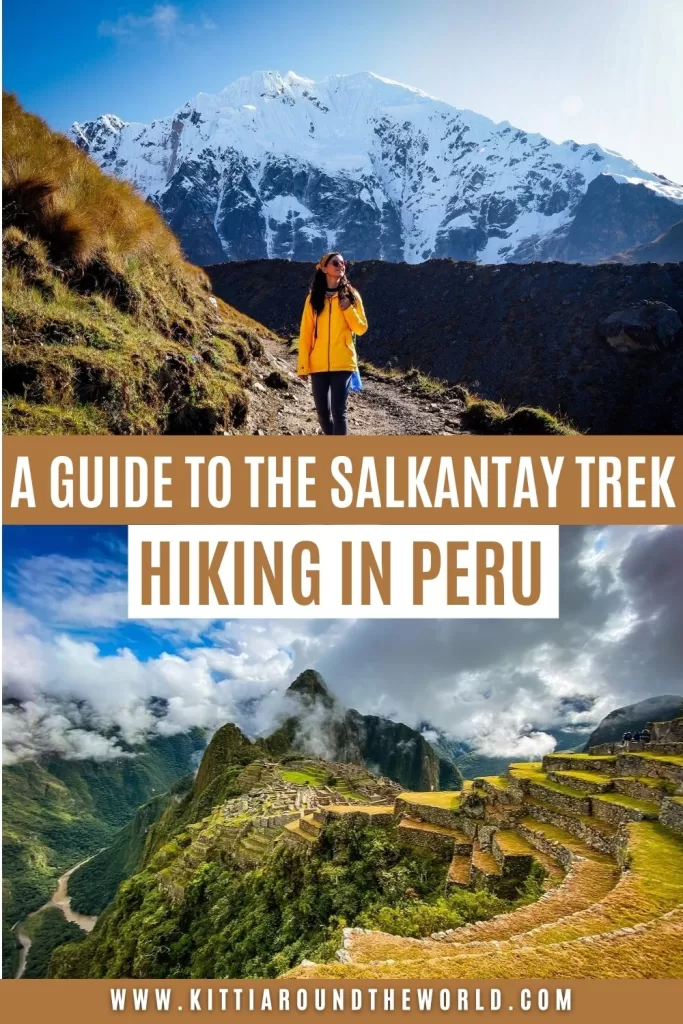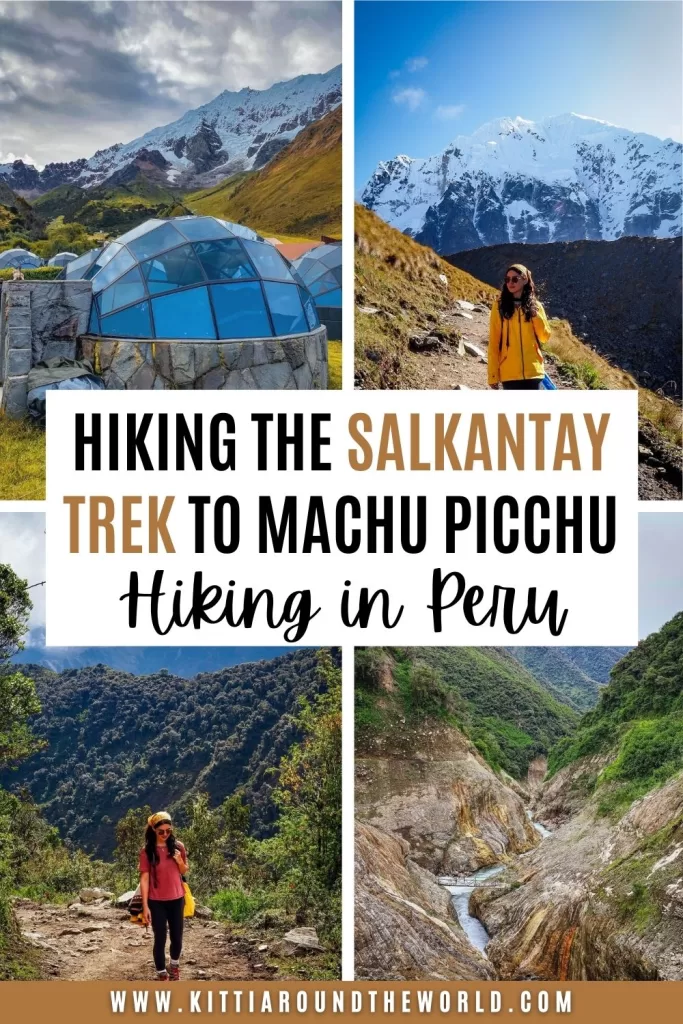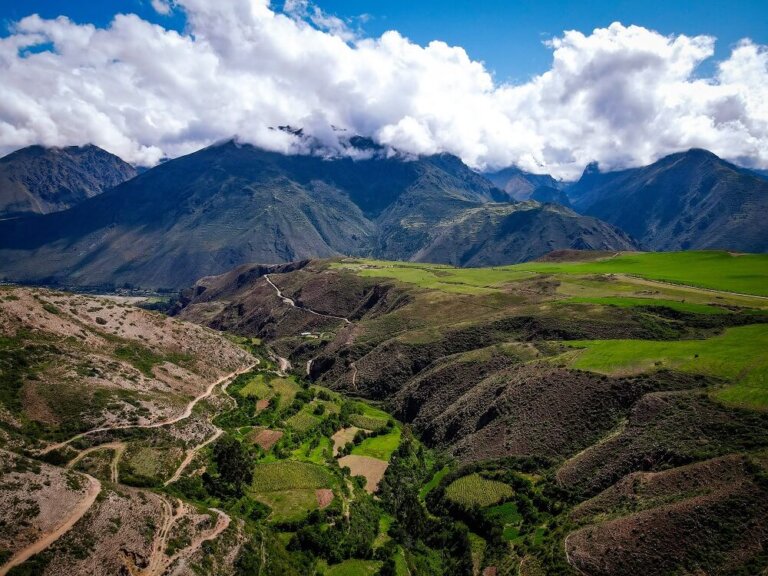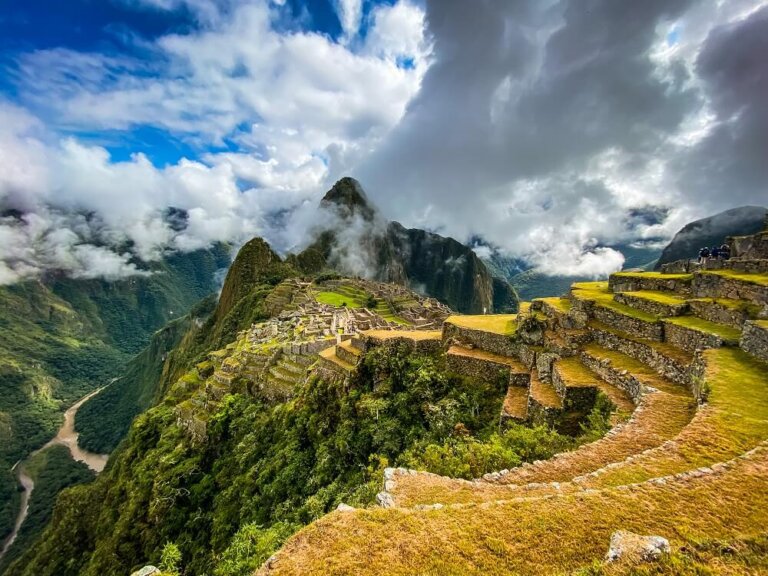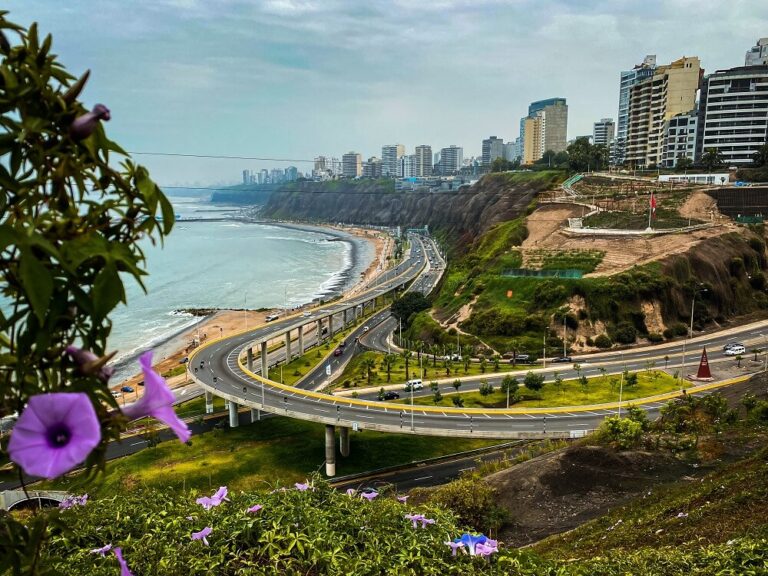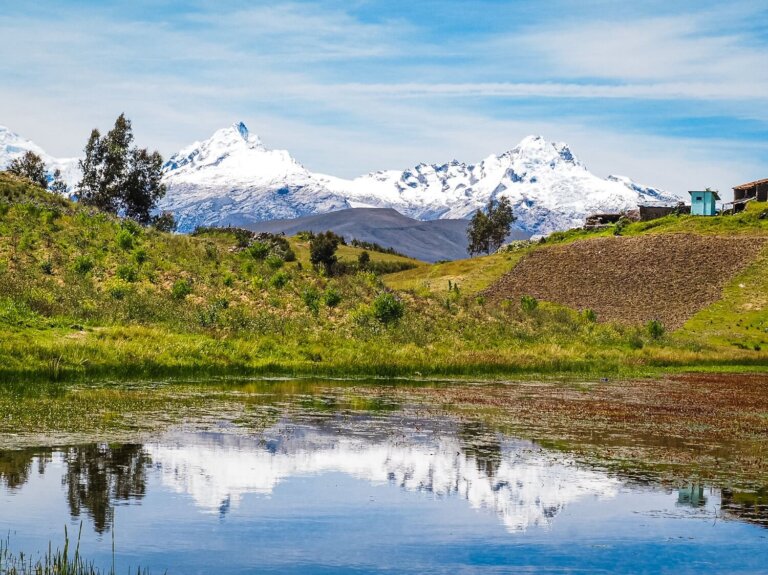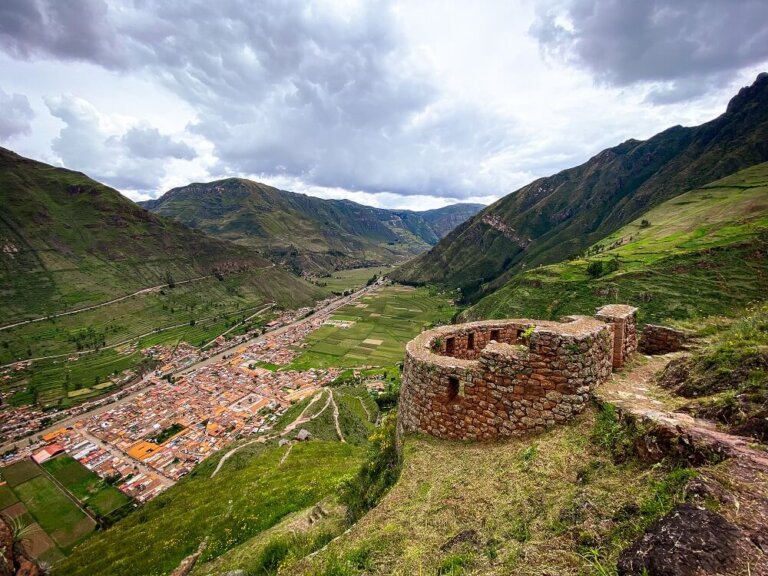All You Need to Know Before Hiking the Salkantay Trek to Machu Picchu, Peru
If you’re currently planning your unforgettable Peru itinerary, and enjoy hiking, then you’re probably considering doing either the Inca Trail or Salkantay Trek to Machu Picchu. If you’d like to learn more about the Salkantay Trek, then you’re in the right place.
In this blog post we’ll answer every question you may have before your trek. These FAQs include trail lengths, difficulty, altitude, elevation gains and what sort of fitness level is required. The post also details the main differences between the classic and shorter trek options, to help you make the decision as to which one is most suited to you.
There’ll also be information about accommodation and food options. You’ll read about what you should pack, wear and what to do with your extra bags whilst on the trek. Lastly, we’ve included information for those wanting to trek independently too. Hopefully by the end of the post, you’ll feel more prepared and ready to embark on an incredible journey through the Peruvian Andes.
If you’d like to see our adventures, then check out the Salkantay Trek video on our YouTube Channel. For more Peru videos check out our Peru Playlist.
Disclosure: This post may contain affiliate links, which means we may receive a small commission if you click a link and purchase something. Clicking these links won’t cost you anything, but it will help us to keep this site up and running! Learn more about our affiliate policy.
What is the Salkantay Trek
The Salkantay Trek is a 75km (46 mi) long trek through the Peruvian Andes. It is one of the most popular ways to get to Machu Picchu.
The trek is named after the Salkantay Mountain which reaches an altitude of 6,271 m (20,574 ft). The name of the mountain comes from the Quechua words ‘Salca’ and ‘Antay’. ‘Salca’ means wild, and ‘Antay’ means something like avalanche maker. For this reason, many consider the mountain to be sacred and call it Apu Salkantay which means Lord in Quechua.
During your hike you’ll pass through the Salkantay Pass which is the highest point along the entire trek at 4,630 m (15,190 ft).
The Salkantay Trek is still less popular or as famous as the Inca Trail. However, many consider it to be just as beautiful, if not more so, since it takes you through the Vilcabamba mountain range, where you’ll see glaciers and lagoons before descending down into the Andean Jungle.
Did you know? National Geographic Adventure Magazine listed the Salkantay Trek as one of the best 25 treks in the world.
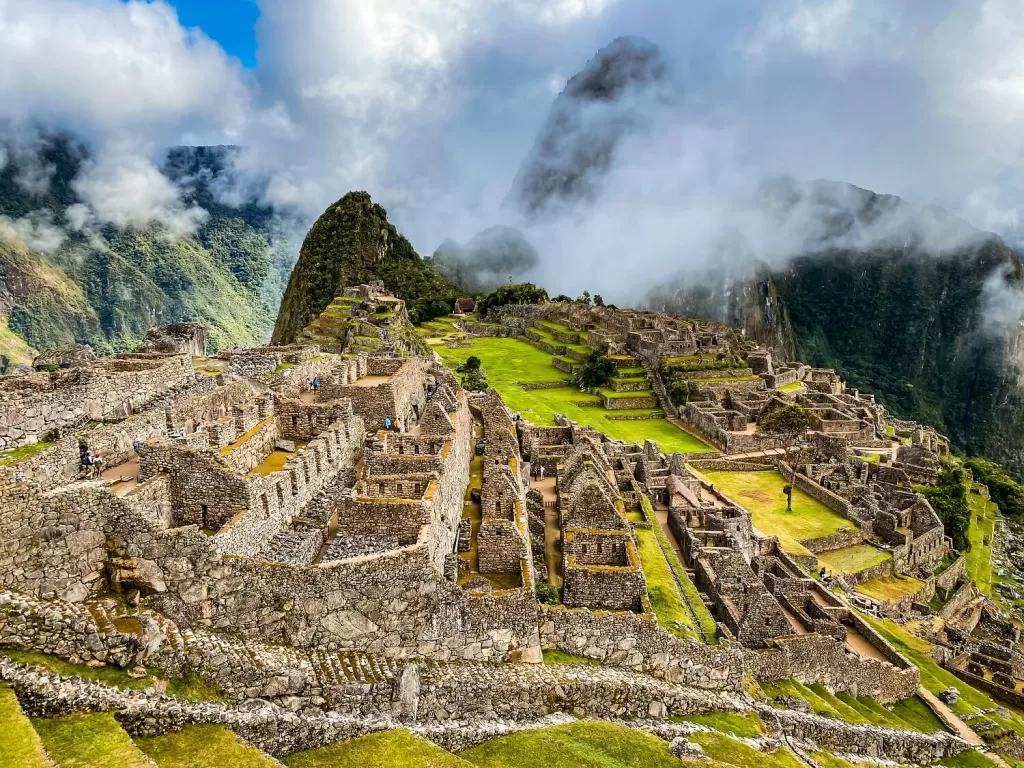
Booking the Salkantay Trek to Machu Picchu
Below are a few important facts you should read before booking the Salkantay Trek to Machu Picchu.
Salkantay Trek to Machu Picchu Packages
There isn’t just one version of the Salkantay Trek you can book. You can opt for a shorter or even a longer version of it:
The Classic Salkantay Trek (5 days)
During the Classic 5 days 4 nights Salkantay Trek you’ll be trekking for four days and will visit Machu Picchu on the fifth. The trek takes you to Humantay Lake, one of the best day trips from Cusco, on your first day. Then you’ll hike up to the Salkantay Pass, the highest point along the trek, before entering the cloud forest on your second day. On the third day you’ll hike through the Amazon Rainforest and then finish your trek in Aguas Calientes on your fourth day.
Short Salkantay Trek (4 days)
Another popular variety of the Salkantay Trek is the 4-day 3-night version. It is pretty much the same as the Classic one. The main difference is that on your third day you’ll get to take a transport from La Playa to the Hidroelectrica train station from where you’ll hike into Aguas Calientes.
Salkantay Trek Challenge (3 days)
This is an even shorter version of the trek where you’ll be trekking for two days and visiting Machu Picchu on the third. The main difference is that this trek doesn’t go to Lake Humantay, instead taking you all the way to the cloud forest on your first day. The second day will be the same as the last day of trekking on the 4-day trek. It’s definitely a more challenging version of the Classic trek.
These three treks are probably the most popular versions of the Salkantay Trek. There are, however, much longer versions of it too. You can complete a 6, 7, 8 or even 9 day trek in the Andes which is amazing if you have the time and are a big hiker.
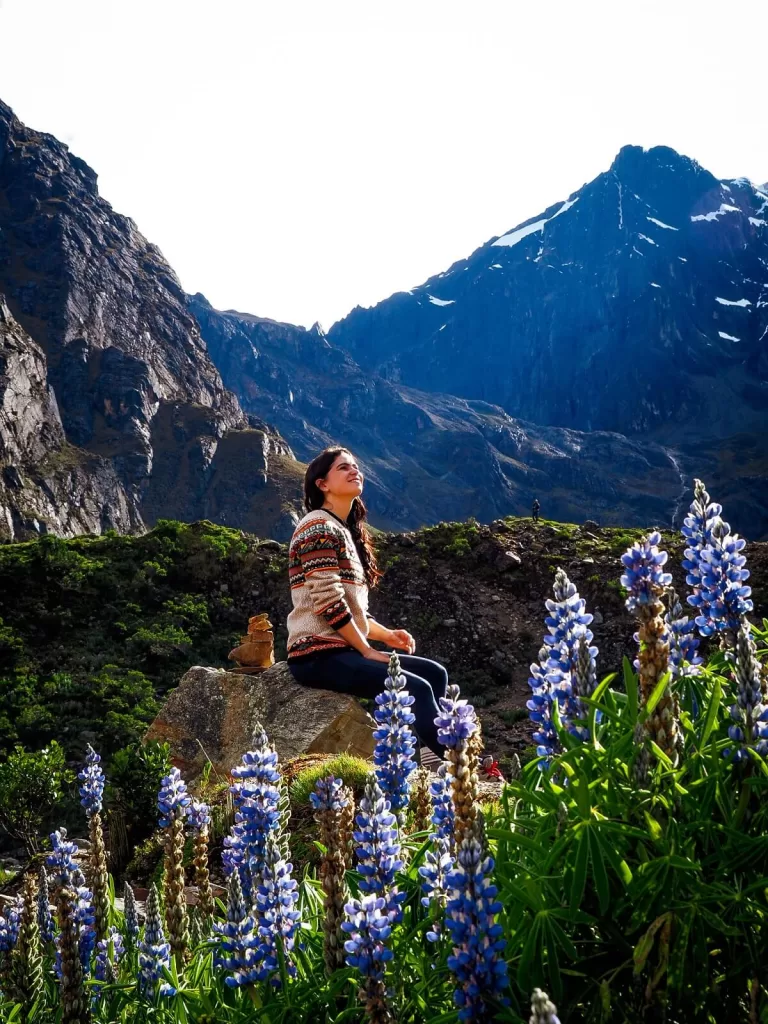
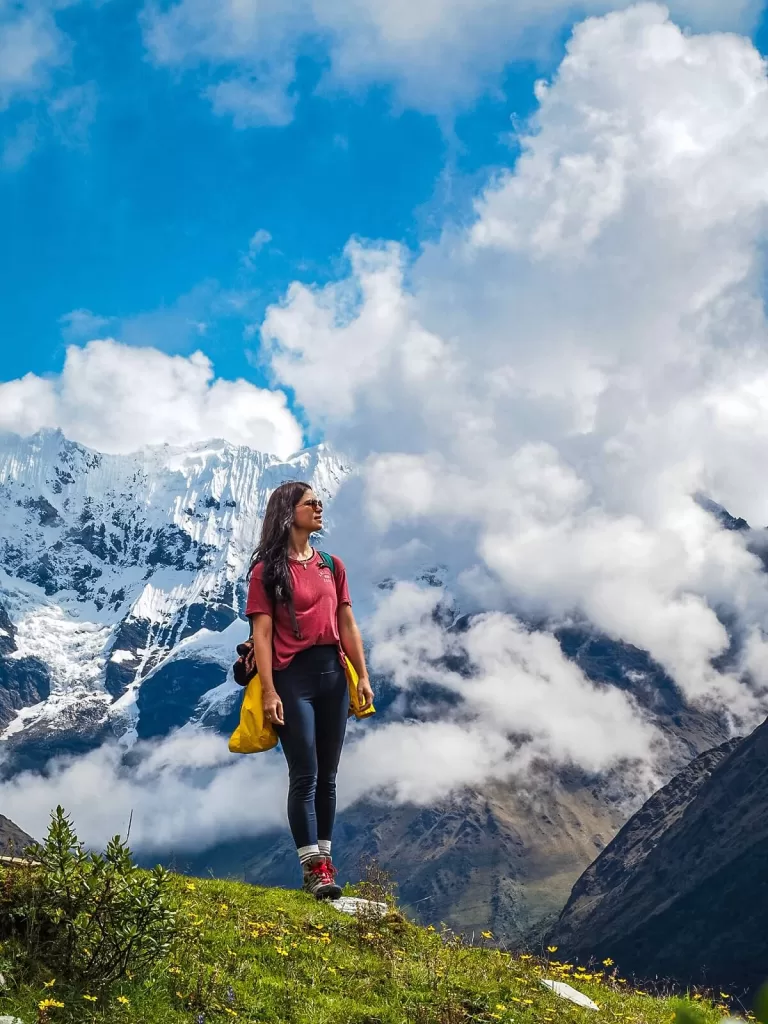
Best Time to Do the Salkantay Trek to Machu Picchu
You can technically hike the Salktantay Trek all year round with the exception of February. However, there are better and worse times of the year to complete it.
The wet season is normally between December and March. Whilst visiting during this time frame doesn’t necessarily mean that you’ll be hiking in the pouring rain, the chances are much higher. The trek can become a bit more dangerous due to the bad weather conditions and is more likely to get cancelled. Even if it does go ahead, you really want to enjoy the jaw dropping scenery and not be wishing the trek was over because you’re soaking wet and feeling miserable. It’s also worth noting that the trek is closed in February.
The dry season is from about April to November. This time frame definitely gives you a high chance of a sunny and enjoyable trek. If you come just before the dry season, around April, then you’ll probably have a pleasant and rain free hike. It’s also less busy with tourists, so a good time to come to avoid the crowds.
June to September are the most popular tourist months, so be prepared for a lot more people to be on the trail with you. Plus, you might want to book your trek a bit further in advance.
How Far in Advance do You Need to Book the Salkantay Trek?
The great thing about the Salkantay Trek is that you really don’t need to book it as far ahead as the Inca Trail. The Inca Trail has a limit of 500 trekkers per day which includes support staff. Therefore, available tickets can sell out pretty quickly, especially in the high season. Since the Salkantay Trek doesn’t have such a limit at the time of writing, it’s a great alternative in case you can’t book on the Inca Trail.
The main thing to bear in mind is that they have a limit on how many people can enter Machu Picchu per day. This is currently capped at 2,500 people for the ‘Machu Picchu only’ ticket. You probably know that you can combine your Machu Picchu visit with other hikes up the adjacent mountains. These tickets have way less availability per day. Therefore, if you know that you’d like to hike Huayna Picchu for example, then book your Salkantay Trek a bit sooner.
You normally don’t have to worry too much about advanced bookings if you’re coming in the shoulder or off seasons. For reference, the high season is between April and October.
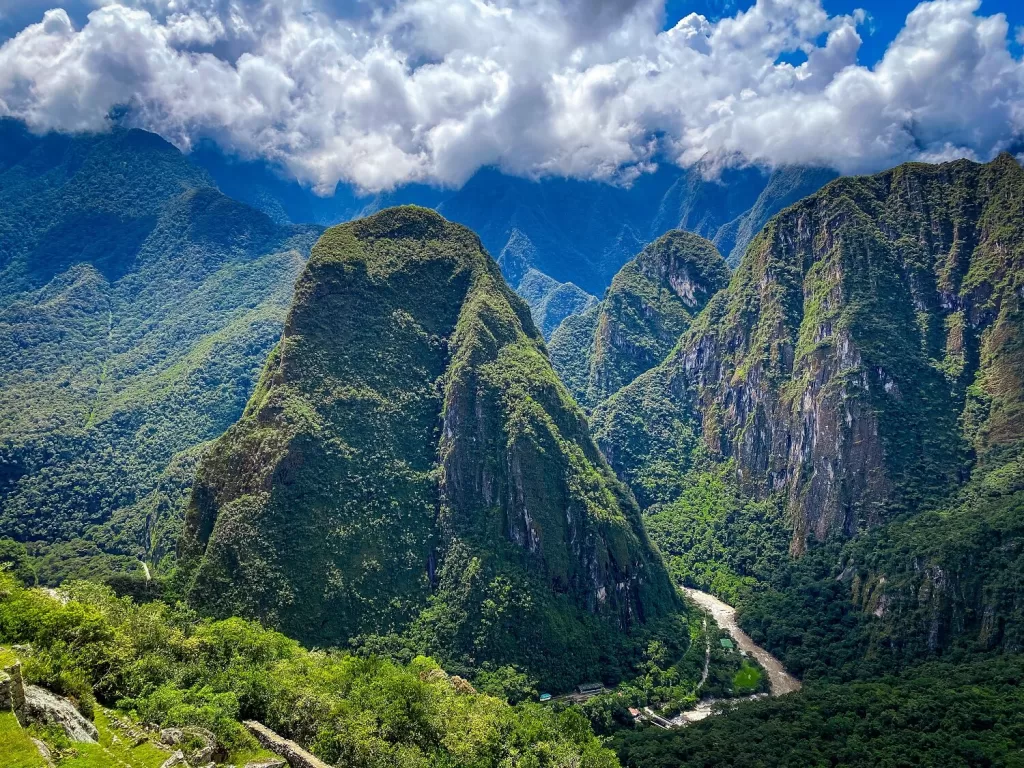
Do You Need Special Travel Insurance to Hike the Salkantay Trek?
We cannot emphasize enough how important it is to have travel insurance before any trip you make abroad. Now, most travel insurance won’t automatically include cover for all the activities you’re planning on doing during your travels.
For example, if you’re visiting Peru, and planning on hiking in high altitudes, then you should have cover for high altitude trekking in your insurance policy. Make sure to shop around to find the most suitable one. You just never know what could happen and it’s better to be safe than sorry.
How Much Does the Salkantay Trek Cost?
As you do your research you’ll see quite a big range of costs, starting from 250USD and going as high as 700USD. This is because there are many companies offering the same trek but with different amenities. These differences include modes of transport, type of accommodations, quality of food, and how fairly they pay their staff.
For example, expect to pay more if you want to stay in any of the cool looking accommodations such as the Sky Domes and Jungle Huts. If you enjoy camping or want to keep costs down then you can pick a cheaper tour where you’ll sleep in a tent during your trek.
Many companies include a scenic train ride back to Ollantaytambo from Aguas Calientes. It’s only a 1.5 hour comfortable train journey plus a 2-hour minivan ride from Ollantaytambo to get back to Cusco. If this isn’t included then you’ll be on a 6 to 7 hour bus ride back to Cusco AND you’ll have to walk back to the Hidroelectrica first, which isn’t fun!
Tours that cost a bit more will also have better food and dietary options. Honestly, the chefs are magicians and can cook some incredible meals in the middle of nowhere. Also consider if water will be included in the price or not.
We also suggest reading a bit more about the company and how they treat their staff. If a tour is too cheap they probably don’t pay their staff fairly, and you might want to opt for a more expensive one or tip the staff well. They deserve much better compensation than what they get for their hard work.
As expected, if you opt for a shorter version of the Classic trek, it’s going to be slightly cheaper too. However, that doesn’t necessarily mean that it’s going to be easier to complete!
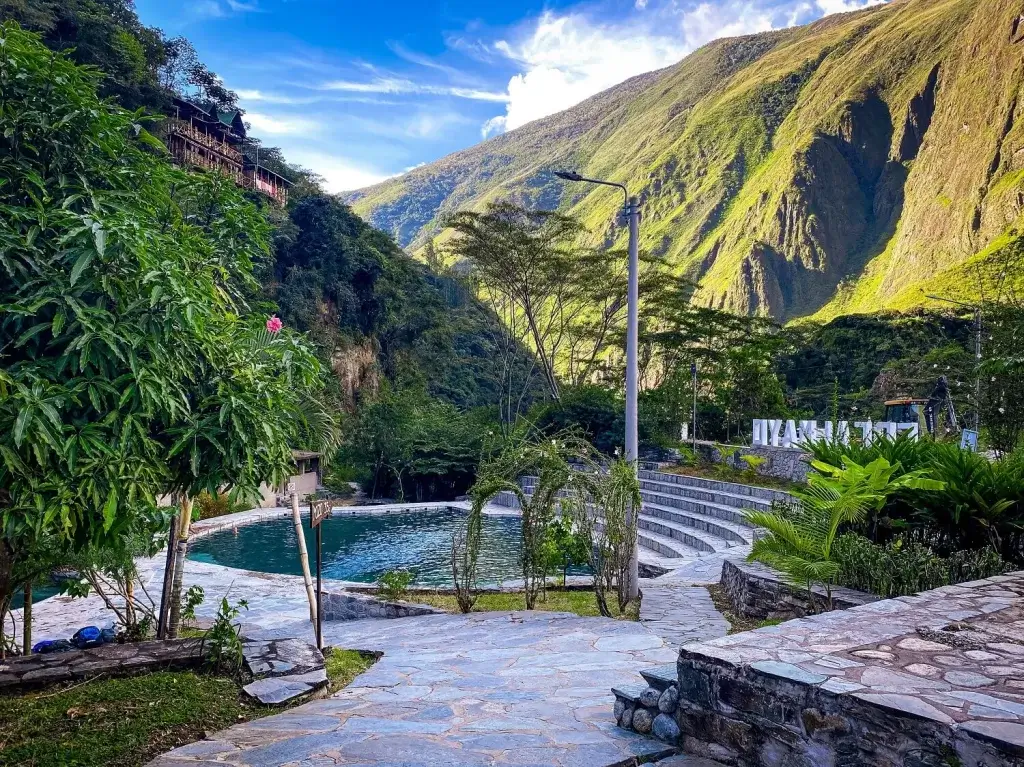
Additional Salkantay Trek Costs
We’d like to point out that you’ll have to calculate some additional costs on top of the tour package you see online. These will vary based on the company, but here’s a quick list of things you should be aware of:
- Check if all meals and water are included. Our trek didn’t include breakfast on the first day and lunch on our last day in Aguas Calientes.
- Unless you have your own, you can hire sleeping bags and trekking poles for an extra cost.
- Entry fees to the hot springs, plus the transport fee to get there.
- Any additional hikes you want to do at Machu Picchu.
- Bring enough cash to cover anything extra such as hiring a mule to get you up the Salkantay Pass or getting the train from Hidroelectrica to Aguas Calientes instead of hiking.
- Bring some small change for toilet fees (1 or 2 soles), the shower on your second day and any snacks or drinks you might want to buy here or there.
- Tips for your guide, horseman and cook.
Best Salkantay Trek Tour Companies
There are quite a few great companies you can choose from. We read plenty of great reviews of the following companies:
- Salkantay Trekking,
- Alpaca Expeditions,
- G-Adventures,
- Mountain Lodges, and
- Conde Travel.
These are just a few of many. For reference, we went with Salkantay Trekking and had a fantastic experience. As always, we recommend reading about what’s included in the tour, any additional costs and a bit more about the company’s background before booking.

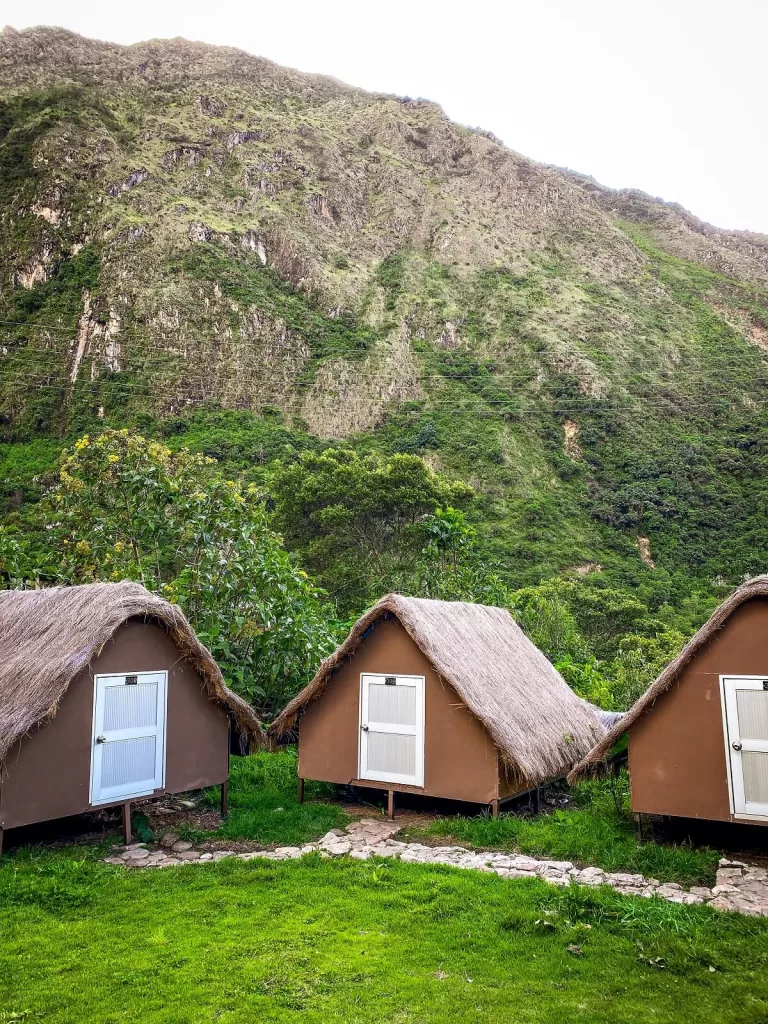
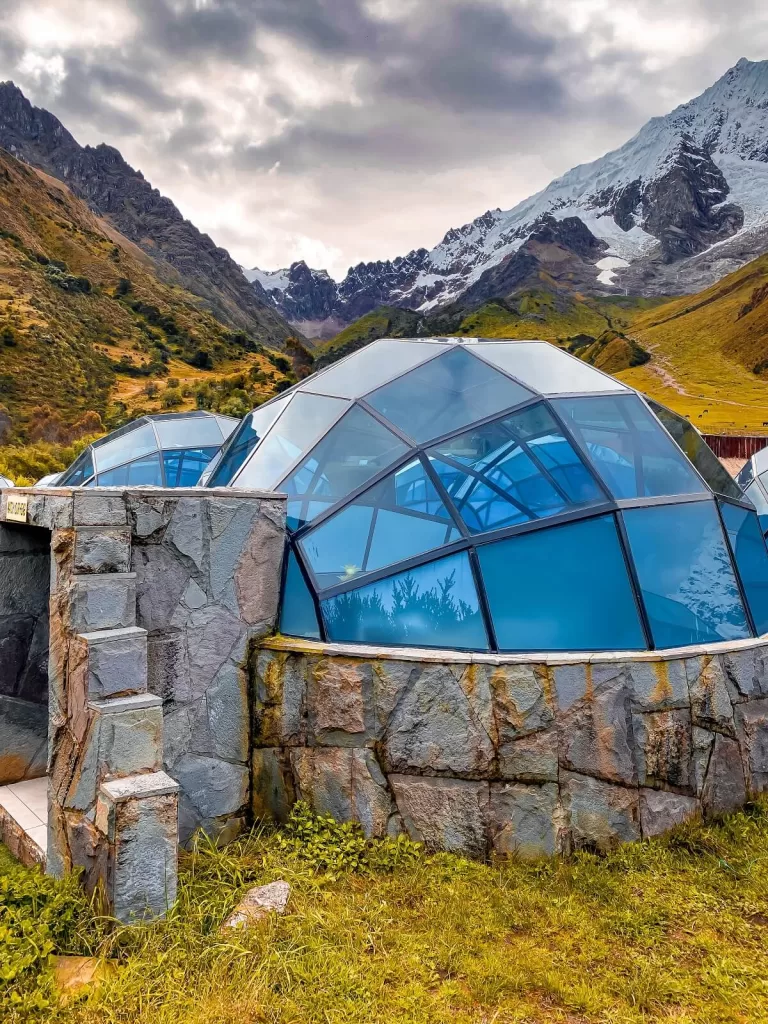
Salkantay Trek to Machu Picchu Accommodation Options
The accommodation options along the Salkantay Trek are varied and depend on your needs and budget.
If you’re trying to save some money then you can always find a company that offers camping for the duration of the trek. These tours are going to be much cheaper. Just think about the time of year you’re booking the trek, because camping might not be as fun during the wet season when there’s more chance of heavy rain. Also consider whether your body is going to be happy to sleep in a tent for so many nights after long days of hiking.
Other than camping, some companies offer more comfortable stays in some cool looking accommodations. These include the Sky Domes on your first night, the Andean Huts on your second night and the Jungle Domes on your third night. Normally, on your last night, you’ll be sleeping in a hostel or hotel in Aguas Calientes. These accommodations are basic, but you’ll have a bed and electricity in your room, which can feel pretty luxurious compared to camping. You’ll be sharing the bathrooms with others though. There isn’t really a shower option on your first night, but you can pay extra to shower on your second night and there are showers at the Hot Springs on your third. Then you can pamper yourself a little on your fourth night in the hotel or hostel room.
Lastly, you can stay in some incredible looking lodges that offer a much more luxurious stay than any of the accommodations listed above. Of course, having private bathrooms and luxurious double beds will come with a price, so have a look around and see what each company has to offer before booking.
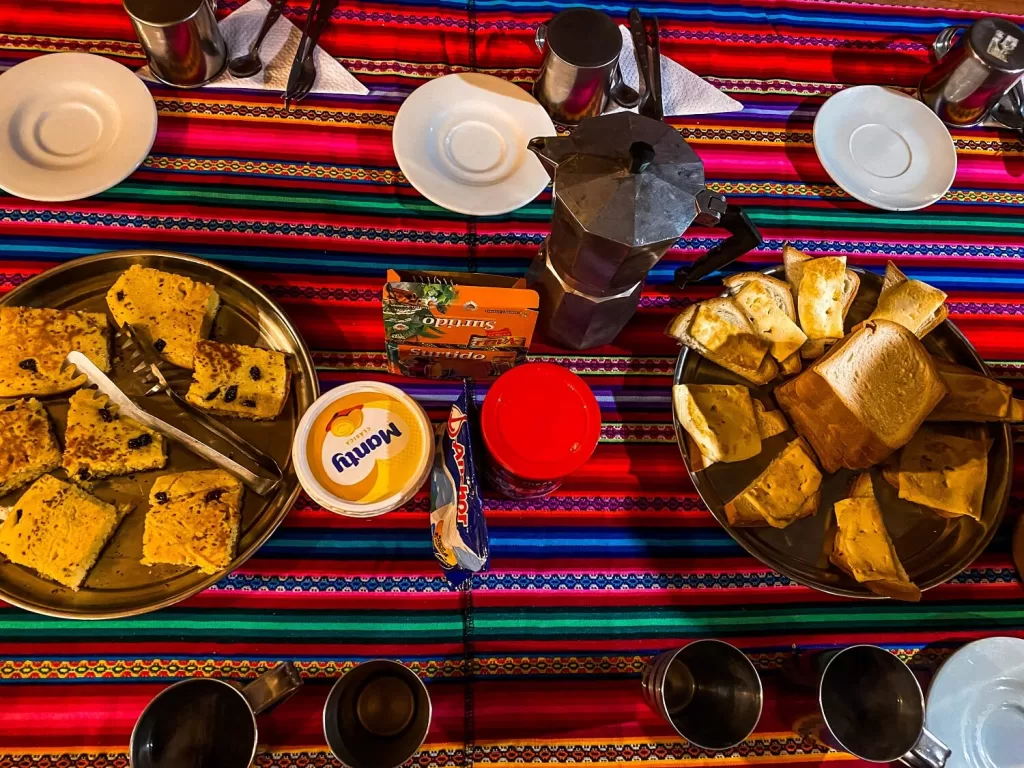
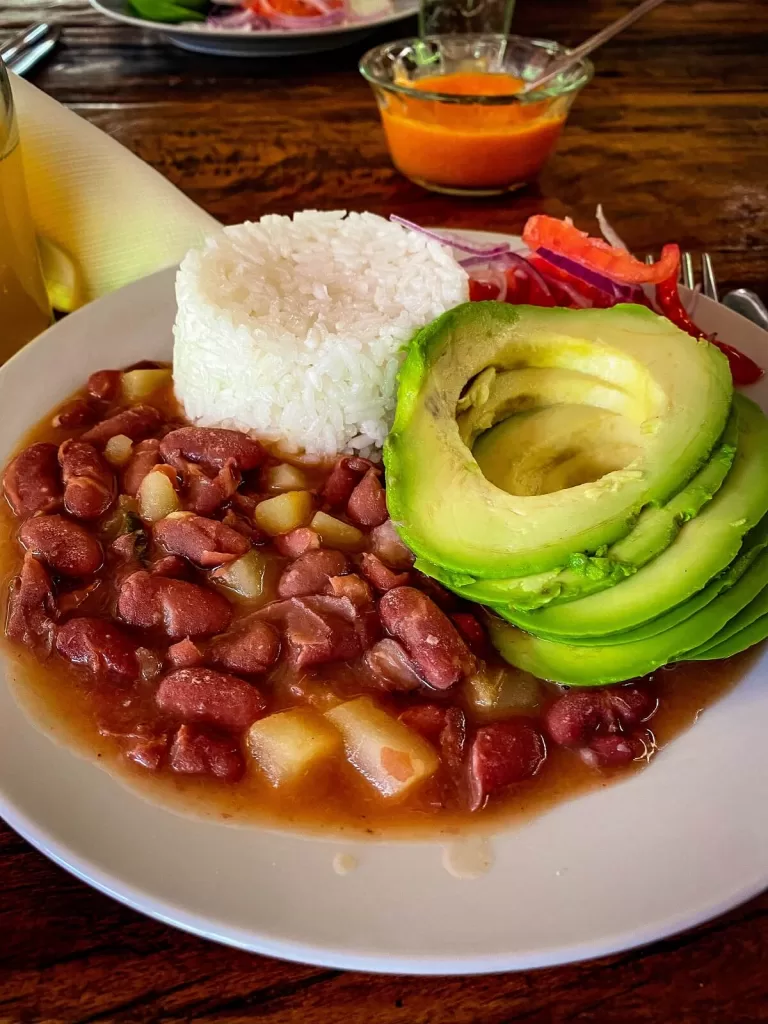
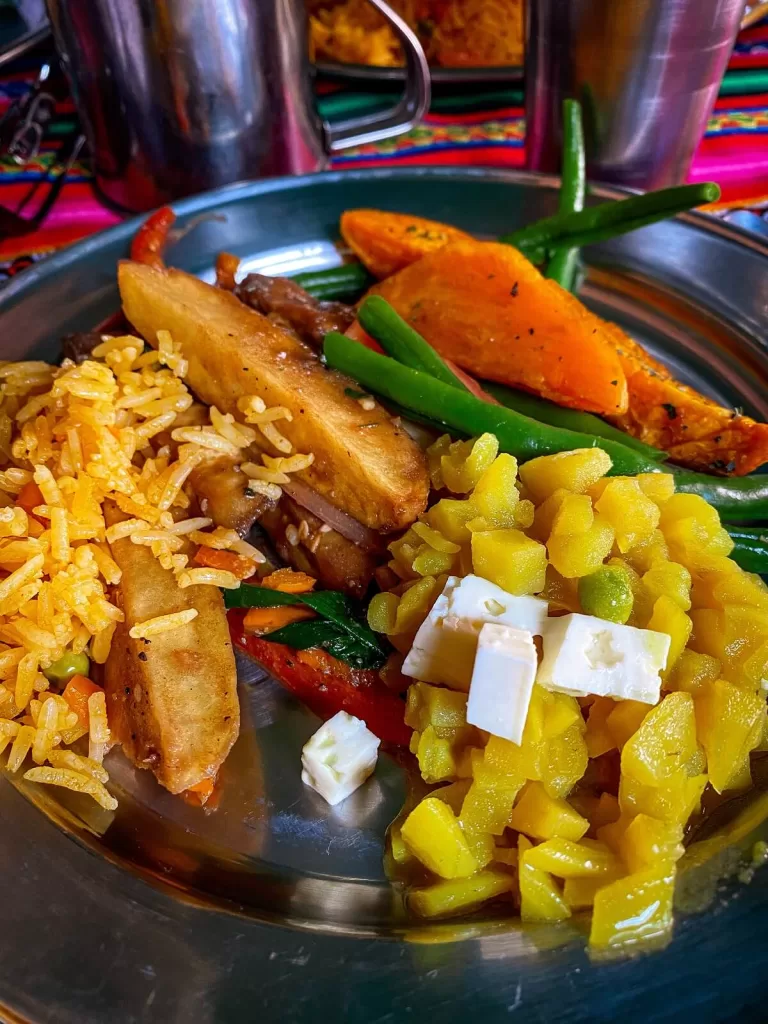
Food and Water Options on the Salkantay Trek to Machu Picchu
Depending on the company you book with, food is normally included in the price. You’ll be provided with breakfast, lunch and dinner pretty much every day of your hike. They’ll also likely give you some snacks for the day to keep you going between meals. Some companies won’t include breakfast on the first day of your hike or lunch and dinner on your last day.
Normally the cooks will cater for a variety of diets, so you won’t have any issues if your vegetarian or vegan. We don’t have personal experiences with allergies, so it’s worth reaching out to companies to see how they can accommodate you.
The cooks are basically magicians, and can somehow create the most flavourful dishes out in the middle of nowhere. We even had cakes made for us a few nights which was pretty impressive in our opinion. I mean, I can’t even bake something decent in my own kitchen, let alone in the middle of nowhere!
We never had any issues with the quality or quantity of the meals. However, we read online that food quality normally increases with the price tag of your trek. Whether it’s true or not we can’t say, but with a bigger budget we assume that the company can buy a more varied selection of ingredients and pay the wages of a better cook.
In terms of drinking water, cooks will normally boil the amount of water each hiker from the group will need between meals. We didn’t have any issues drinking this water, but we had a water purifier bottle for extra security. Note that we read that cheaper treks might not offer water and you’ll need to buy it along the way. Please double check that before you book with a company.
Can You Hike the Salkantay Trek to Machu Picchu Independently?
Unlike the Inca Trail, you can actually complete the Salkantay Trek to reach Machu Picchu without a guide. We only recommend this if you’ve done some solo multi-day trekking before. Now, we don’t have personal experience hiking the Salkantay Trek on our own but here are a few things that we read online:
- If you have your own camping gear you can totally camp for the true trekker experience. However, you can also stay at guesthouses if you don’t want to bring or rent camping equipment.
- It’s worth checking out your accommodation options a few weeks before your visit especially in the high season. Booking a place to stay in advance is always a good idea but you can definitely find accommodations last minute in the low season.
- Bear in mind that if you’re doing it all by yourself, you’ll need to do a bit more planning. For example, you’ll need to get to the trailhead in Soraypampa which will require one or maybe even multiple collectivo and taxi rides.
- With an organised tour you’ll have the luxury of only carrying a small daypack. However, without a tour you’ll have to carry everything you need for the 5 days yourself.
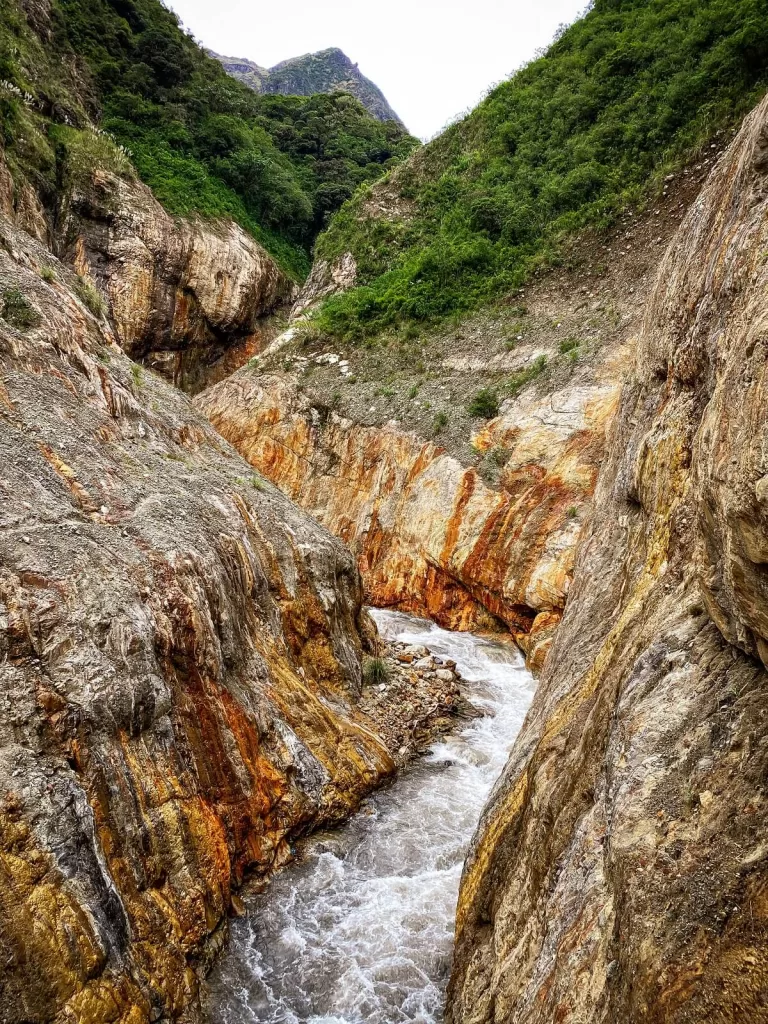
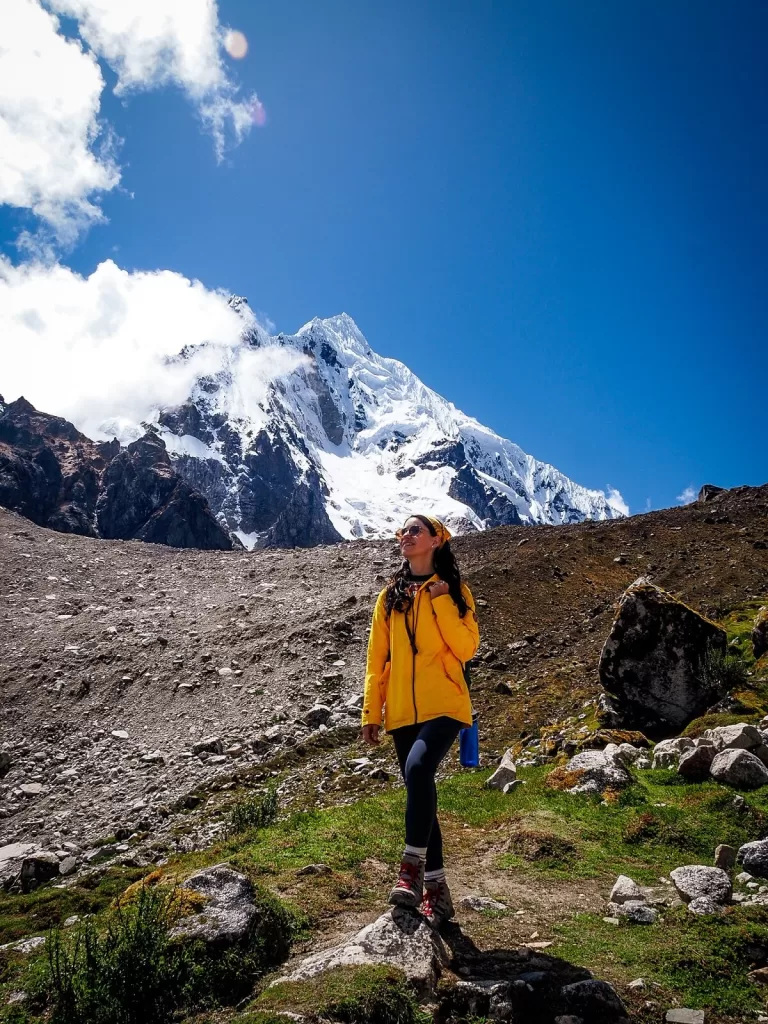
Preparing for the Salkantay Trek to Machu Picchu
Even before booking the Salkantay Trek, you might want answers to some very important questions regarding the trek, such as difficulty, altitude, elevation and other practical preparations like what to pack.
How Difficult is the Salkantay Trek?
The level of difficulty of the Salkantay Trek is considered moderate to challenging.
The challenges come from multiple angles. One of the main ones is the altitude. You’ll be hiking between 4,000 and 4,600 m on your first 2 days. After that you’ll drop down to below 3,000 m but you’ll have to get through the first 2 days regardless. Acclimatising first is key to being able to complete the trek.
Elevation gain is another challenge. When you’re already at high altitude even an extra 100 m of elevation can be challenging. Possibly the greatest elevation you’ll gain during the Classic trek is 730 m (2,395 ft) to reach the Salkantay Pass, then you’ll lose about 1,730 m (5,675 ft) on the same day.
You’ll also be walking great distances everyday. The first day is the shortest at only about 10 km (6.2 mi). The longest you’ll have to trek in one day is about 25 km (15.3 mi) which also happens to be the last day when you’re already pretty tired. Every other day you’ll be trekking around 20 km (12.4 mi). Going downhill can also be very hard on your knees, especially if you already suffer from some issues.
Sleeping in high altitude can also be a challenge. Without a good nights rest, it’s going to be hard to trek for long distances. The highest altitude you’ll have to sleep at is around 3,900 m (12,795 ft) on your first night. That’s about 500 m (1,640 ft) higher than Cusco’s elevation. Luckily, after that you’ll be below 3,000 m (9,842 ft) each night which will definitely guarantee you get a better sleep.
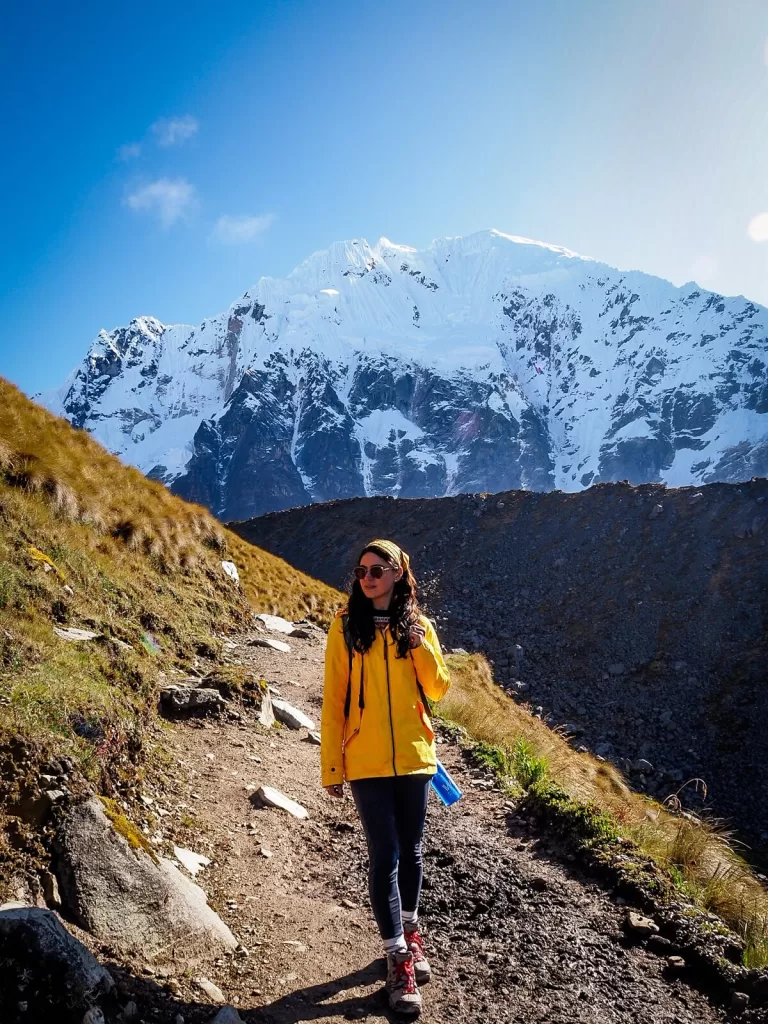
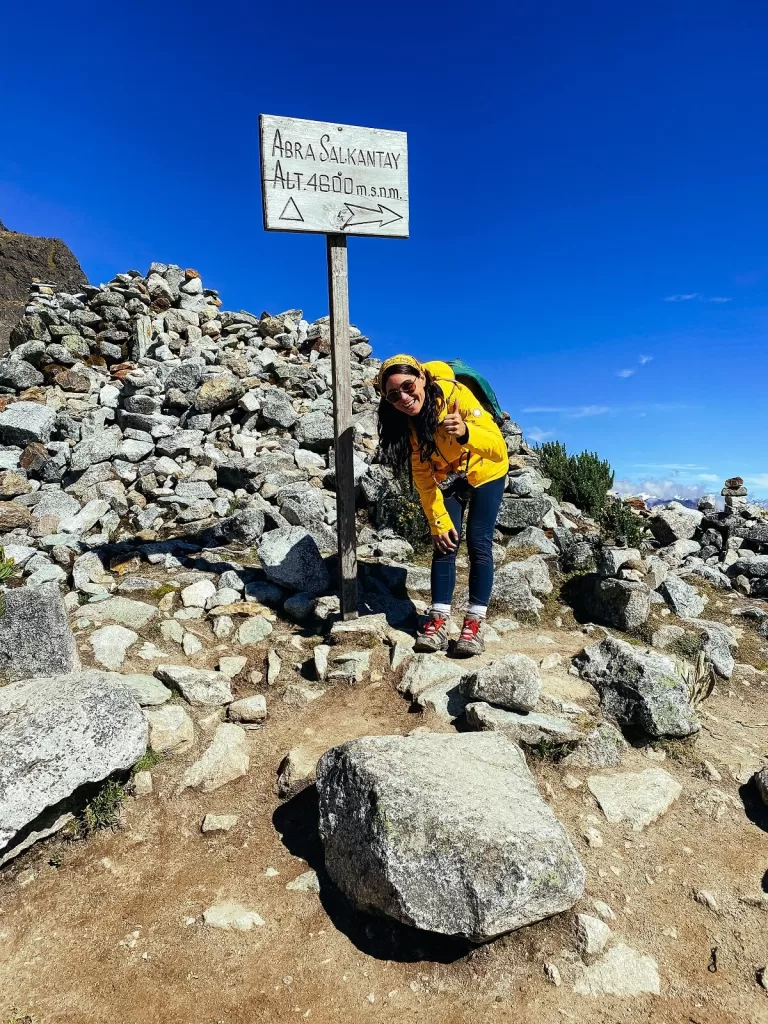
How Fit Do You Need to Be to Hike the Salkantay Trek?
Before you book the Salkantay Trek, it’s important to be honest with yourself: do you really enjoy hiking? If your answer is no, then either book a shorter trek, a day tour or a different kind of adventure such as the Inca Jungle Trek which includes some adrenalin pumping activities like ziplining.
In terms of level of fitness, we don’t recommend signing up for this multi-day trek if you don’t have any prior hiking or trekking experience. We believe that a basic level of fitness is very important to be able to complete this trek. Having some multi-day trekking experience is recommended but perhaps not as essential as having general hiking experience.
If you’ve never had a multi-day trekking adventure before, then you can either do something in your home country before coming to Peru or perhaps go on a 2 or 3-day Colca Canyon hike before visiting Cusco.
It’s worth noting that you can still find the trek challenging even if you have hiking experience. The altitude can definitely make the trek much harder for you regardless of fitness level. Therefore, it’s important that you acclimatise as much as you can before the start of your trek.
Note. You can actually pay for a mule ride on your second day to go up to the Salkantay Pass which is the toughest section of the trek.
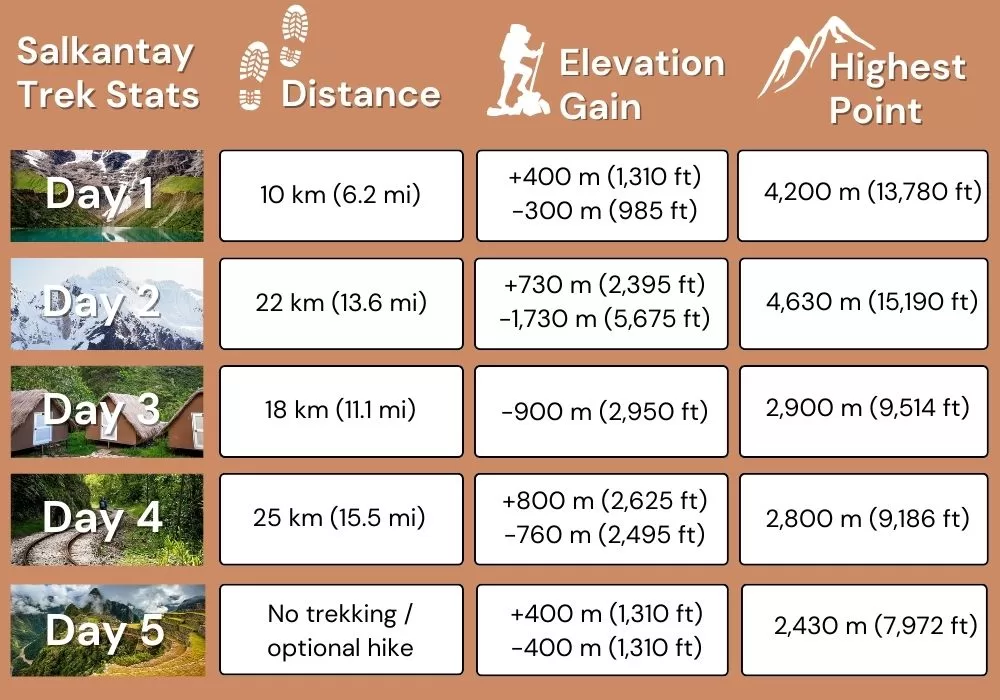
How Long is the Salkantay Trek to Macchu Picchu?
The total distance of the Classic Salkantay Trek is 75km (46 mi). You’ll normally complete this in 4 days despite the tour being a total of 5 days and 4 nights. This is because you’ll arrive to Aguas Calientes on the fourth day and will visit Machu Picchu on the fifth. No real trekking is involved on your last day.
The first day is going to be the shortest day as you’ll only be hiking about 10 km (6.2 mi). The second day is pretty long and difficult with a total of 22km (13.6 mi). On your third day you’ll have a slightly shorter trek at about 18km (11.1 mi). Your last trekking day is going to be the longest at 25 km (15.5 mi).
Of course, if you’re opting for a shorter or longer trek then the distances will be different. Note that just because a trek is done over less days, it doesn’t mean it’s going to be easier. The fewer days you’re trekking for, the more distance and elevation you’ll likely have to tackle each day. Therefore, make sure to check that on the tour operator’s website before booking.
What is the Altitude and Elevation of the Salkantay Trek?
The Salkantay Trek starts at Soraypampa at an elevation of 3,800 m (12,467 ft) above sea level. The maximum altitude along the trek is 4,630 m (15,190 ft) at the Salkantay Pass. The lowest altitude is going to be around 2,000 m (6,562 ft) in the Andean jungle.
Throughout the 5 days you’ll be gaining and losing quite a lot of elevation. For example, on your second day you’ll gain around 730 m (2,395 ft) of elevation to reach the Salkantay Pass, then you’ll lose about 1,730 m (5,675 ft) on the same day.
Altitude sickness is no joke, and you should make sure to acclimatise in Cusco before starting any multi-day trekking.
How to Prevent Altitude Sickness on the Salkantay Trek?
It is important to know that anyone can develop altitude sickness and its symptoms can be less or more severe depending on the person. Symptoms of altitude sickness include dehydration, dizziness, headaches, shortness of breath, heavy breathing, loss of appetite, nausea and vomiting.
To avoid altitude sickness, we recommend spending at least one or two full days in Cusco. If you can spare more, that’s even better. In this case we recommend going on one of the many day trips from Cusco or even going on a little independent hike in the Sacred Valley. Again, if you’re in Peru for longer, definitely go on a 2 or 3-day Colca Canyon trek to practice trekking in altitude.
Try to avoid drinking too much alcohol before your trek and don’t eat too many heavy foods either. It’s very important to stay hydrated during the trek to avoid dehydration and headaches. You can drink Coca tea like the locals do at high altitudes in Peru. In addition, you can also buy some altitude sickness tablets before you hike anywhere in Peru.
Generally speaking, once you start losing elevation, you’ll definitely feel much better. If you’re struggling, the guides will help you as much as they can with Coca tea and oxygen if needed.
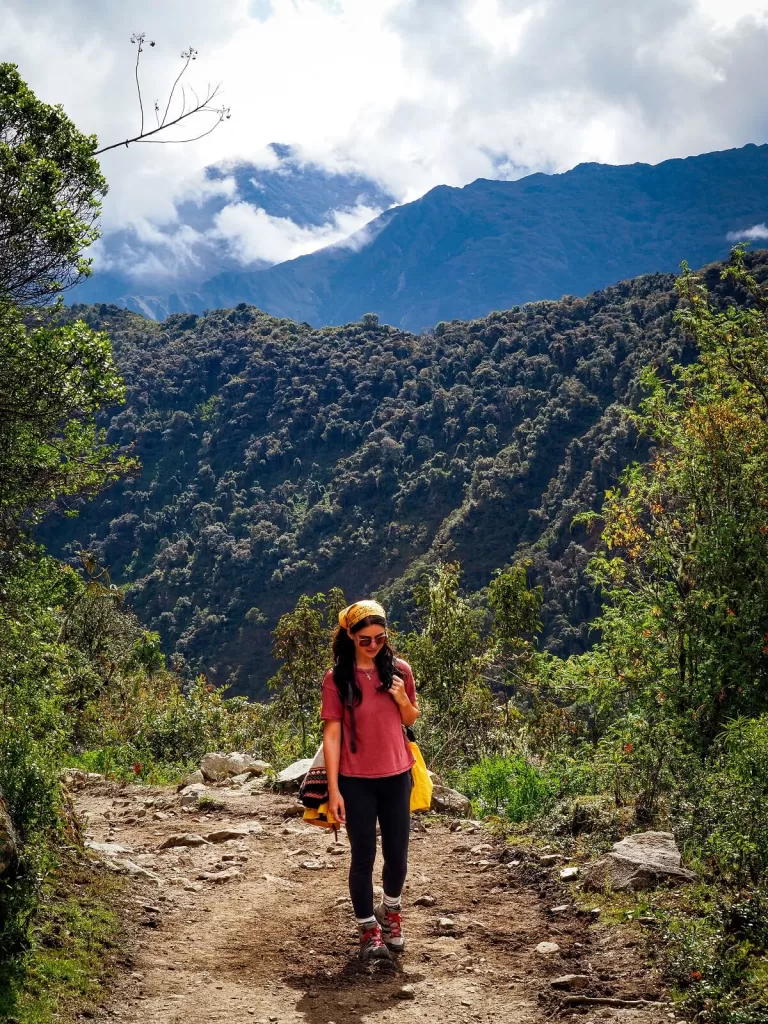
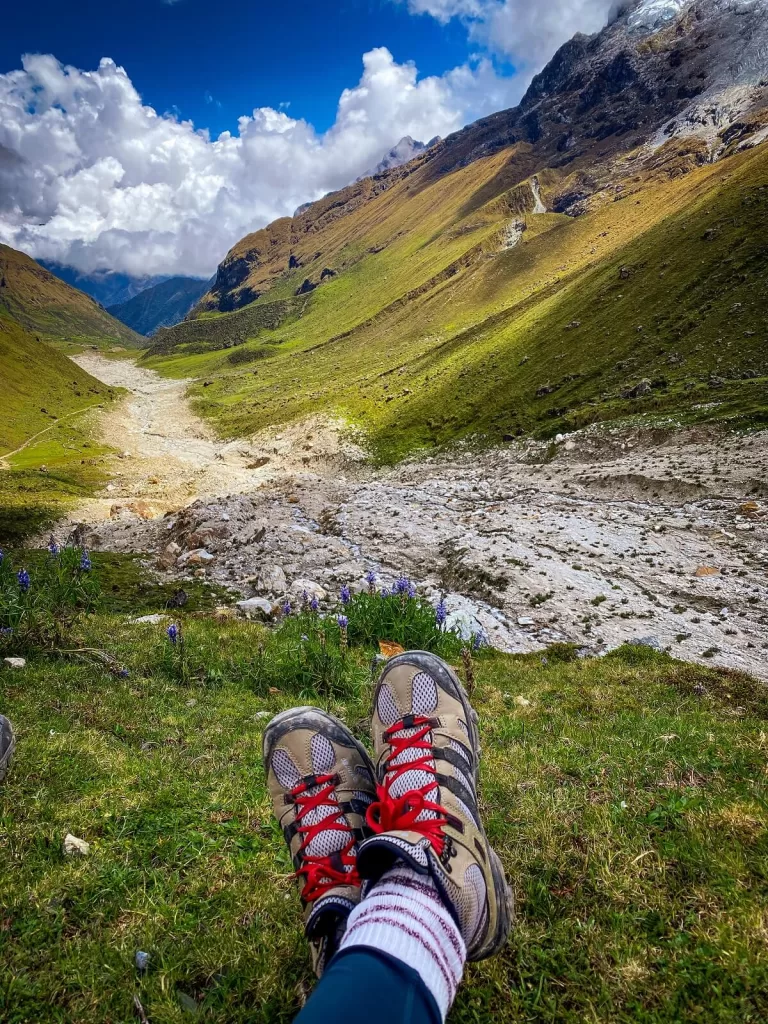
What to Pack for the Salkantay Trek
Let’s talk about what to pack for the Salkantay Trek. Normally, the evening before your hike you’ll get given a small duffel bag. You’ll have to fit everything you need for the next 5 days in it, but it can’t exceed a certain weight. This duffel bag will be carried by a mule or horse, so you won’t have access to it during the day.
For that reason, you’ll also want to carry a daypack that fits in everything you’ll need for the day.
Clothing Items
In terms of a hiking outfit, we recommend packing for both cold and warm temperatures. You’ll definitely need long trousers, fleeces, hats and gloves on your first two days. Then it’ll be quite hot when you enter the cloud forest so you’ll want to have shorts and t-shirts too. The temperatures will also change a lot during the day so definitely wear layers. Make sure to also pack waterproofs like a rain jacket.
In terms of footwear, it’s important to wear hiking boots or shoes that have good grip and support. We suggest packing some light weight trainers, flip-flops or slides that you can change into after your hike when relaxing around your accommodation.
Obviously, make sure to pack everything you need for a few nights such as underwear, pyjamas, toiletries and so on. On the Classic Trek you’ll have the chance to go to the hot springs, so pack some swimwear and quick dry towels too.
Electronics
In terms of electronics, don’t forget to pack your phone and camera gear. If you book accommodations rather than camping, then you can definitely charge your electronics in your room. We still recommend taking a portable charger just in case.
Bring a torch or headlamp. They will come in handy when moving around the accommodation after dark.
For entertainment, we also packed our Kindles.
Accessories and Other Items
In terms of accessories for the hike, we recommend taking a reusable water bottle, sun-cream, a hat or cap and sunglasses for protection. Also bring some insect repellent for when you’re in the jungle section of the hike. Trust us, the mosquitos and sandflies can be pretty bad there.
We suggest having a basic first-aid kit with you containing some painkillers, altitude tablets, band-aids and any prescribed medications. Band-aids will come in handy if you get blisters after hiking for so long! Unless the company provides you with some toilet paper, we highly recommend packing a roll each.
Bring a rain cover for your day pack, especially if you’re visiting in the rainy season.
Make sure to have your ID card or passport with you in a waterproof case and have enough cash on you to pay for anything extra.
What to Do with Your Extra Backpacks and Luggage?
If you’re travelling around Peru, chances are you’ll have a bigger luggage or backpack with you. We were on a one-year long sabbatical, backpacking through Mexico and South America before heading to Montenegro, Albania and then Turkey. So, it’s safe to say that we had everything but the kitchen sink with us.
Luckily, you don’t need to carry your big backpack or roll your wheelie suitcase through the Andes.
The best option is to leave any extra bags at the hotel or hostel you stayed at in Cusco. Depending on your itinerary you might spend an extra night in that accommodation after your trek anyway. Most places are happy to store your luggage for a few nights. Depending on your accommodation, you may or may not have to pay a small fee per night for this. If you’re taking a tour, the company might have space in their office to store your bags too, so it’s also worth asking. This is especially important if you’re travelling with a lot of valuable items such as laptops.
If you’re a slow traveller and are planning on spending an extended period of time in Cusco, then you can book a longer Airbnb stay – which normally gives you a discount – and then leave your bags there. You’ll be paying double accommodation this way, so try to calculate which option will be more cost effective and secure before your visit.
What Happens the Evening Before the Salkantay Trek?
Technically speaking, the Salkantay Trek starts the evening before you start trekking. There’s normally a briefing in the evening at the company’s office, which you have to attend.
This means that you’ll have to arrive in Cusco the morning before your trek at the absolute latest. Of course we suggest being in Cusco for at least two days, especially if you want to do some sightseeing.
During the briefing you’ll meet your fellow hikers who you’ll be spending the next few days with. It’s great to meet them then rather than at 3AM the next morning. You’ll also meet your guide who will tell you the day by day Salkantay Trek itinerary, ask about food requirements and will give you the chance to ask any questions you might have.
You’ll get given your duffel bag which you’ll have to pack that night. In addition, you’ll also have to pay the remaining trekking fee, and you can hire sleeping bags and trekking poles.
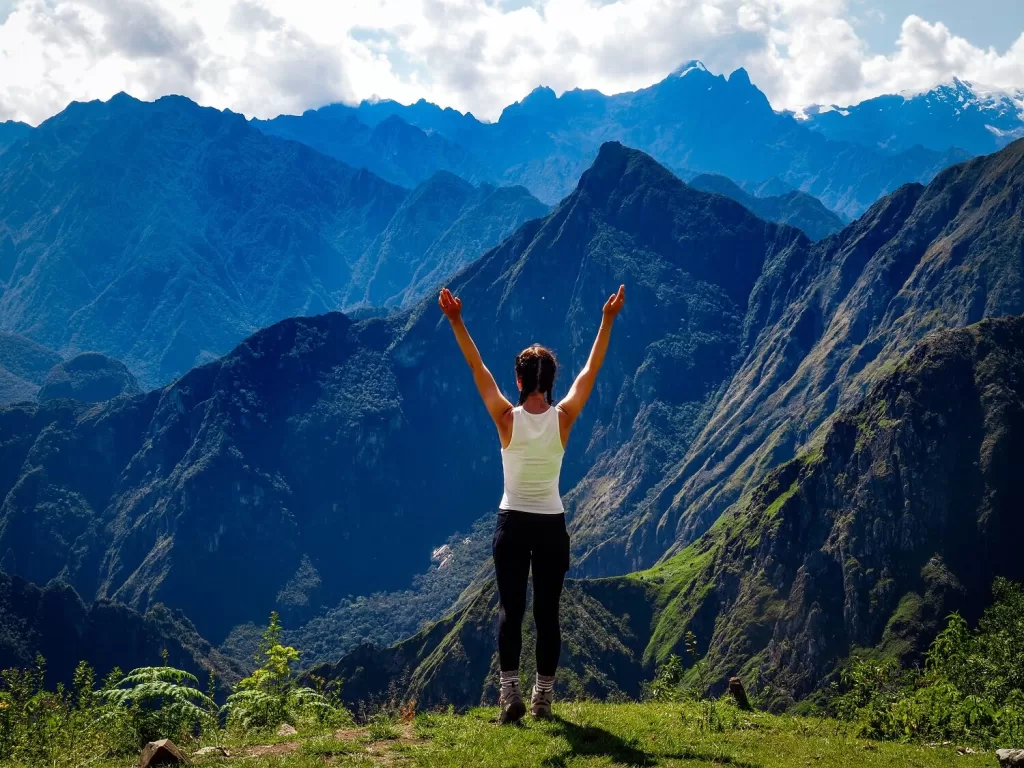
Final Thoughts on Booking the Salkantay Trek
Booking the Salkantay Trek to Machu Picchu over the Inca Trail was a decision we didn’t regret. Whilst we have no personal experience hiking the Inca Trail, there were a few decision making factors when we were comparing the two treks. First of all, we loved the fact that the Classic Salkantay Trek is a day longer than the Inca Trail, so we could stay in the Andes for longer.
We also loved the unique accommodations the Salkantay Trek offered and we have no regrets booking a slightly more expensive tour just to experience those. We didn’t have high expectations for the food, but it definitely exceeded all of them in the end.
Challenging our bodies to hike at even higher altitudes was a great way to see what we were capable of doing. This also gave us confidence to go even higher and complete the 2-day Ausangate Trek and many other hikes in Huaraz.
Have you ever hiked the Salkantay Trek to Machu Picchu? If so, what else would you add to our guide? If not, would you pick the Salkantay Trek after reading this post? Let us know in the comments below.
Now, let your adventure begin,

Our Top Travel Resources
Accommodation: For hotels we always use Booking.com and Hostelworld for hostels. We also book longer stays on Airbnb or Vrbo.
Flights: To find the best flight prices we always check Skyscanner, Google Flights or WayAway. Then we also check the airlines’ websites too for comparison.
Car Rentals: We use Discover Cars when we want to rent a car as it compares local, national and international companies.
Activities: If we book organised tours we always check either GetYourGuide or Viator.
Foreign Currency: Whenever we can we prefer to pay in local currency and for that we always use our Wise card. We can easily withdraw money from the ATM or pay by card at most shops and restaurants.
Travel Insurance: We never go anywhere without travel insurance. You never know what will happen on your trip, so good travel insurance like SafetyWing can protect you in case of injury, illness, theft and cancellations.
eSIM and VPN: To get data abroad we use Airalo which is an app that allows you to download a prepaid eSIM to your phone in over 190 countries. Make sure to have a VPN to avoid hackers accessing your personal data when using public WIFI. We use Surfshark which is the only VPN that offers one account on unlimited devices.
Remember…It all starts with a Pin…
